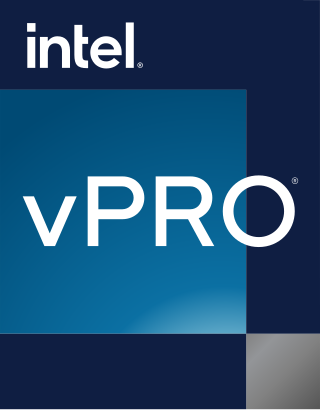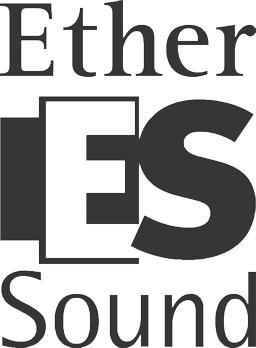Related Research Articles

Centrino was a brand name of Intel Corporation which represented its Wi-Fi and WiMAX wireless computer networking adapters. The brand name was first used by the company as a platform-marketing initiative. The change of the meaning of the brand name occurred on January 7, 2010. The Centrino name for laptops was replaced by the Ultrabook.

VideoLAN is a non-profit organization which develops software for playing video and other media formats. It originally developed two programs for media streaming, VideoLAN Client (VLC) and VideoLAN Server (VLS), but most of the features of VLS have been incorporated into VLC, with the result renamed VLC media player.

VLC media player is a free and open-source, portable, cross-platform media player software and streaming media server developed by the VideoLAN project. VLC is available for desktop operating systems and mobile platforms, such as Android, iOS and iPadOS. VLC is also available on digital distribution platforms such as Apple's App Store, Google Play, and Microsoft Store.
The Intelligent Platform Management Interface (IPMI) is a set of computer interface specifications for an autonomous computer subsystem that provides management and monitoring capabilities independently of the host system's CPU, firmware and operating system. IPMI defines a set of interfaces used by system administrators for out-of-band management of computer systems and monitoring of their operation. For example, IPMI provides a way to manage a computer that may be powered off or otherwise unresponsive by using a network connection to the hardware rather than to an operating system or login shell. Another use case may be installing a custom operating system remotely. Without IPMI, installing a custom operating system may require an administrator to be physically present near the computer, insert a DVD or a USB flash drive containing the OS installer and complete the installation process using a monitor and a keyboard. Using IPMI, an administrator can mount an ISO image, simulate an installer DVD, and perform the installation remotely.
QSC may refer to:

Show control is the use of automation technology to link together and operate multiple entertainment control systems in a coordinated manner. It is distinguished from an entertainment control system, which is specific to a single theatrical department, system or effect, one which coordinates elements within a single entertainment discipline such as lighting, sound, video, rigging, or pyrotechnics. A typical entertainment control system would be a lighting control console. An example of show control would be linking a video segment with a number of lighting cues, or having a sound cue trigger animatronic movements, or all of these combined. Shows with or without live actors can almost invariably incorporate entertainment control technology and usually benefit from show control to operate these subsystems independently, simultaneously, or in rapid succession.
Qualcomm Atheros is a developer of semiconductor chips for network communications, particularly wireless chipsets. The company was founded under the name T-Span Systems in 1998 by experts in signal processing and VLSI design from Stanford University, the University of California, Berkeley, and private industry. The company was renamed Atheros Communications in 2000 and it completed an initial public offering in February 2004, trading on the NASDAQ under the symbol ATHR.

Intel vPro technology is an umbrella marketing term used by Intel for a large collection of computer hardware technologies, including VT-x, VT-d, Trusted Execution Technology (TXT), and Intel Active Management Technology (AMT). When the vPro brand was launched, it was identified primarily with AMT, thus some journalists still consider AMT to be the essence of vPro.
In audio and broadcast engineering, audio over Ethernet (AoE) is the use of an Ethernet-based network to distribute real-time digital audio. AoE replaces bulky snake cables or audio-specific installed low-voltage wiring with standard network structured cabling in a facility. AoE provides a reliable backbone for any audio application, such as for large-scale sound reinforcement in stadiums, airports and convention centers, multiple studios or stages.
Systech Corporation (Systech) is a California corporation founded in 1981 and headquartered in San Diego, California.
An ABX test is a method of comparing two choices of sensory stimuli to identify detectable differences between them. A subject is presented with two known samples followed by one unknown sample X that is randomly selected from either A or B. The subject is then required to identify X as either A or B. If X cannot be identified reliably with a low p-value in a predetermined number of trials, then the null hypothesis cannot be rejected and it cannot be proven that there is a perceptible difference between A and B.

EtherSound is an audio-over-Ethernet technology for audio engineering and broadcast engineering applications. EtherSound is developed and licensed by Digigram. EtherSound is intended by the developer to be compliant with IEEE 802.3 Ethernet standards. Just as the IEEE defines rates such as 100 Megabit and Gigabit Ethernet standards, EtherSound has been developed as both ES-100 and ES-Giga. The two versions of EtherSound are not compatible.
CobraNet is a combination of software, hardware, and network protocols designed to deliver uncompressed, multi-channel, low-latency digital audio over a standard Ethernet network. Developed in the 1990s, CobraNet is widely regarded as the first commercially successful audio-over-Ethernet implementation.
QSC AG was founded in Cologne on 5 August 1999 by Bernd Schlobom and Gerd Eickers as the first German and one of the first European HDSL internet service provider. The company went public on 19 April 2000 in Frankfurt Stock Exchange.
QSC is an American manufacturer of audio, video and control products such as amplifiers, loudspeakers, cameras, video endpoints, and digital signal processors including the Q-SYS networked audio, video and control platform. QSC and Q-SYS products are used by audio and video professionals for commercial applications, including corporate, higher education, sports venues, themed entertainment, and cinema customers worldwide.

Intel Active Management Technology (AMT) is hardware and firmware for remote out-of-band management of select business computers, running on the Intel Management Engine, a microprocessor subsystem not exposed to the user, intended for monitoring, maintenance, updating, and repairing systems. Out-of-band (OOB) or hardware-based management is different from software-based management and software management agents.
In computing, sys is a command used in many operating system command-line shells and also in Microsoft BASIC.

TenAsys is a privately owned company providing real-time software and services based on the x86 Intel Architecture and Microsoft Windows operating system.
Peter Watts is a designer of pro audio equipment who is recognized as a leader in his field.
AES67 is a technical standard for audio over IP and audio over Ethernet (AoE) interoperability. The standard was developed by the Audio Engineering Society and first published in September 2013. It is a layer 3 protocol suite based on existing standards and is designed to allow interoperability between various IP-based audio networking systems such as RAVENNA, Wheatnet, Livewire, Q-LAN and Dante.
References
- 1 2 3 4 Kevin Gross (October 7, 2009). "Q-LAN Whitepaper" (PDF). QSC Audio Products. Archived from the original (PDF) on 2019-01-29.